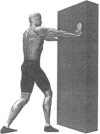Abstract
Objective
To determine the effect of stretching and jogging on the series elastic muscle stiffness of the plantar flexors and on the range of dorsiflexion at the ankle joint.
Methods
24 healthy subjects participated in this study. Each subject undertook all of the following protocols, in random order: (1) stretching protocol: five 30 s static stretches with 30 s rest between stretches; (2) aerobic jogging protocol: subjects ran on a treadmill for 10 min at 60% of their maximum age predicted heart rate; (3) combined protocol: subjects ran first and then stretched. A damped oscillation technique was used to measure the series elastic stiffness of the plantar flexors. Dorsiflexion of the ankle was assessed with a weights and pulley system that moved the ankle joint from a neutral position into dorsiflexion passively. Electromyography was used to monitor the activity of the plantar and dorsiflexors during these procedures. The statistical analysis of these data involved an analysis of covariance
Results
For decreasing series elastic muscle stiffness running was more effective than stretching (P<0.05). In contrast, the results for range of motion showed that the combination protocol and the stretching only protocol were more effective than the running only protocol (P < 0.05) for increasing dorsiflexion range of motion at the ankle.
Conclusions
Both jogging and static stretching exercises appear to be beneficial to individuals participating in sporting activities.
Keywords: warm up, stretching, muscle stiffness, joint range of motion
Full text
PDF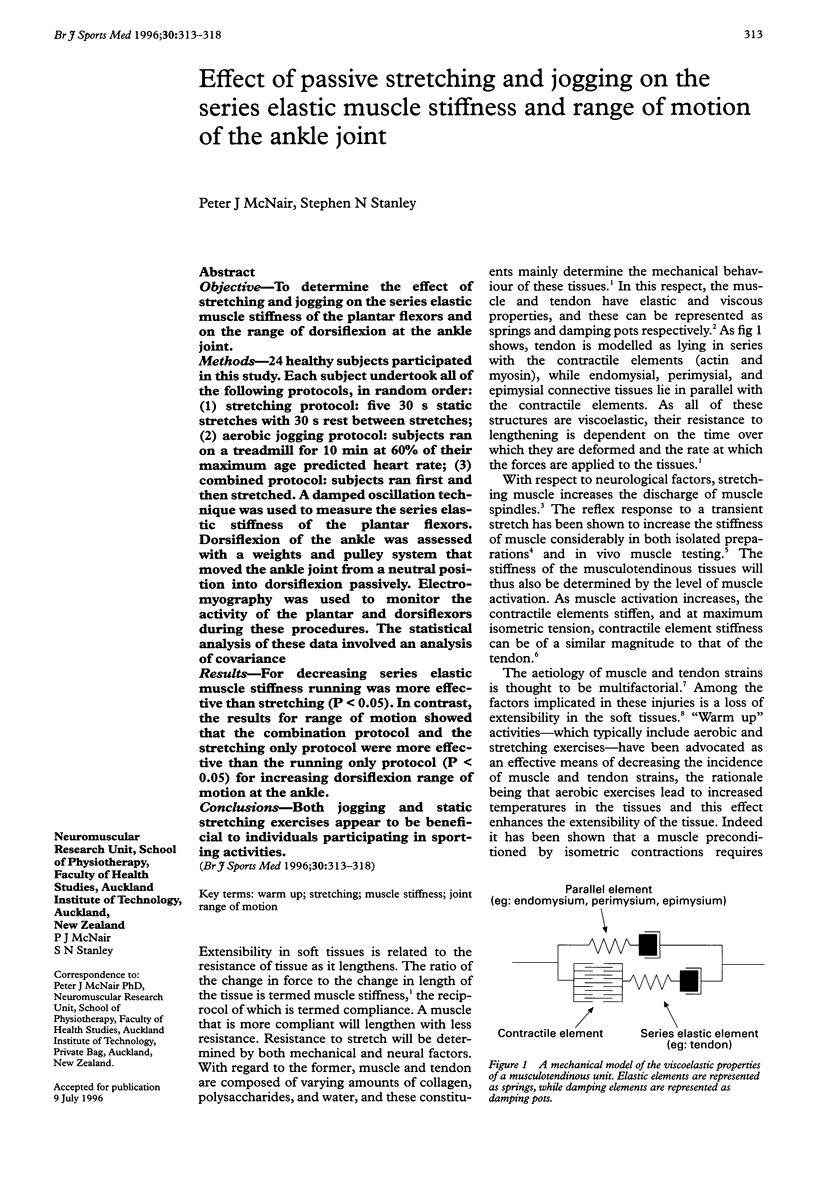
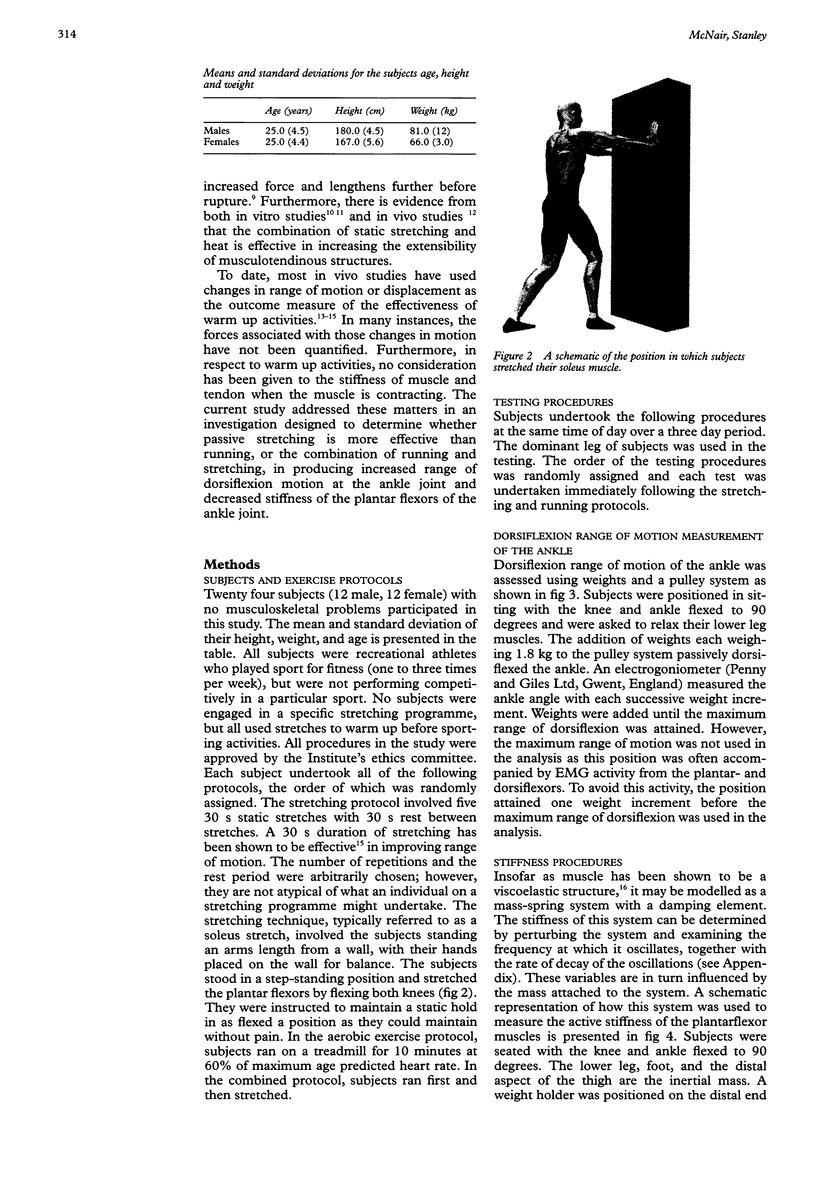
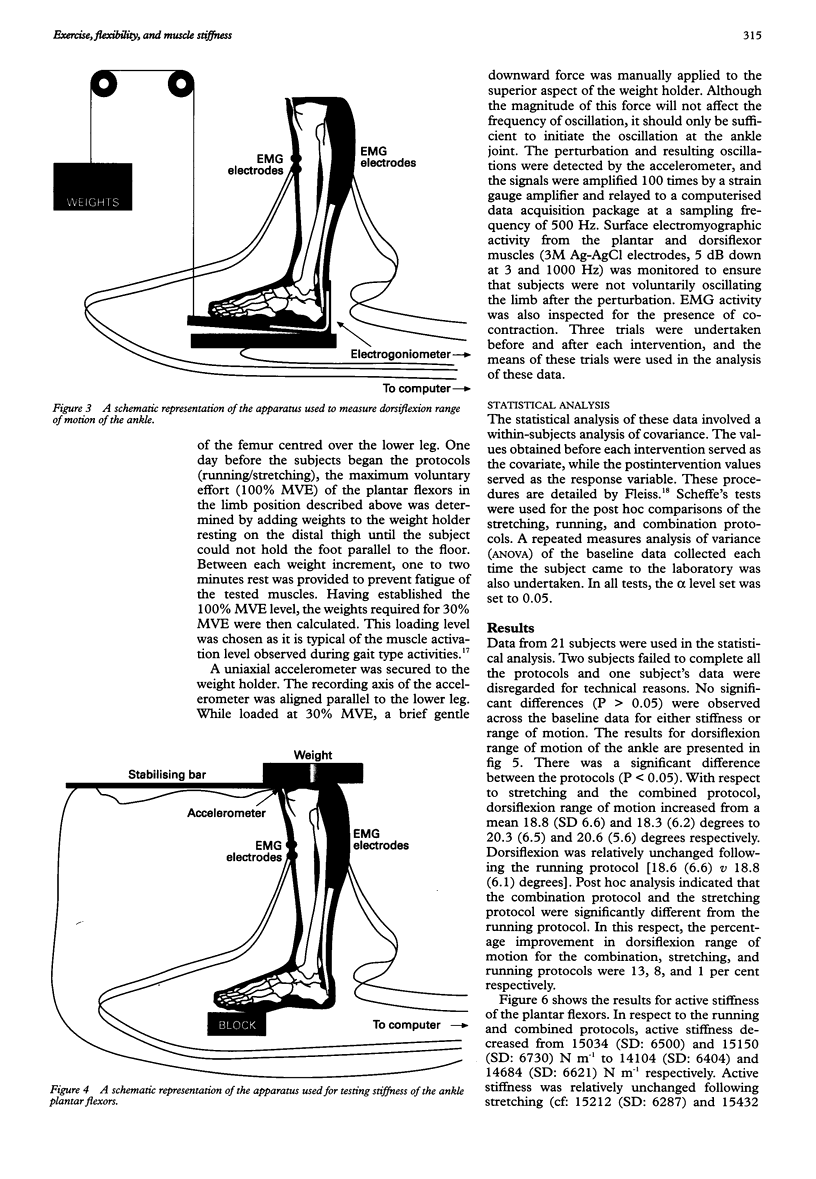
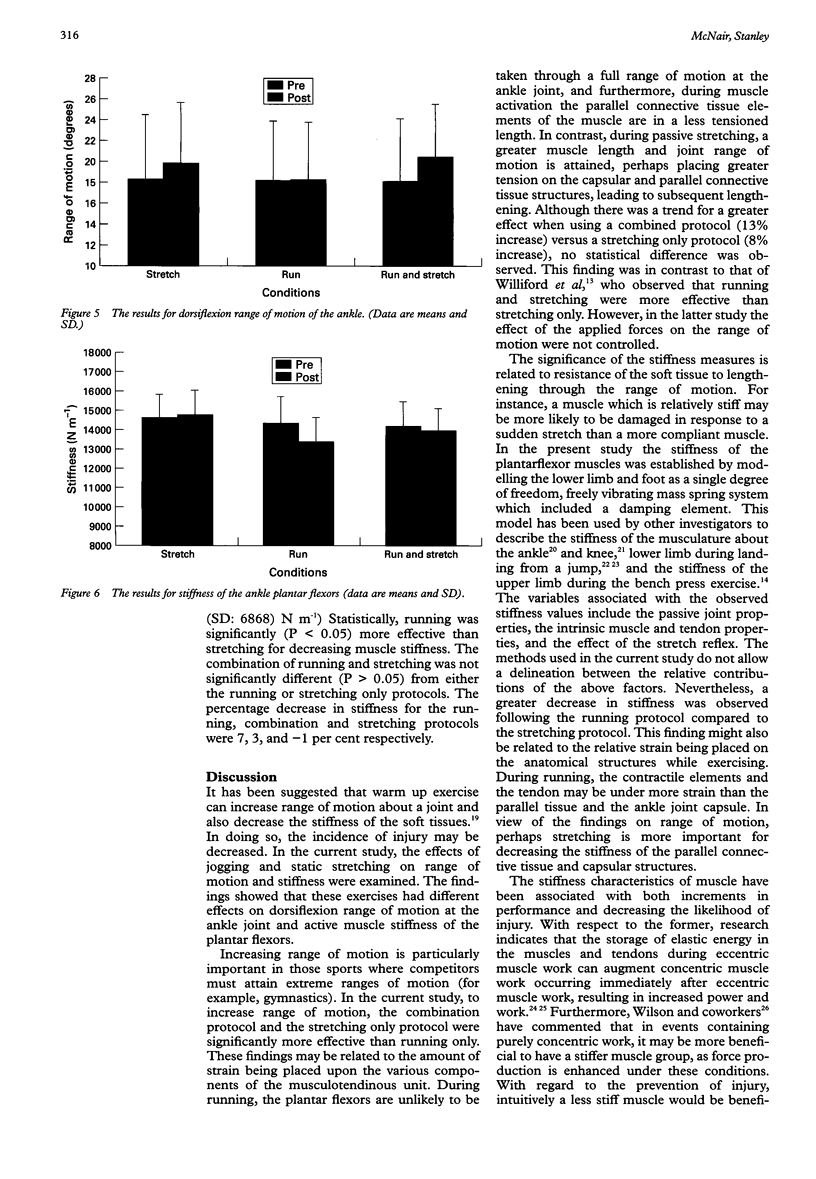
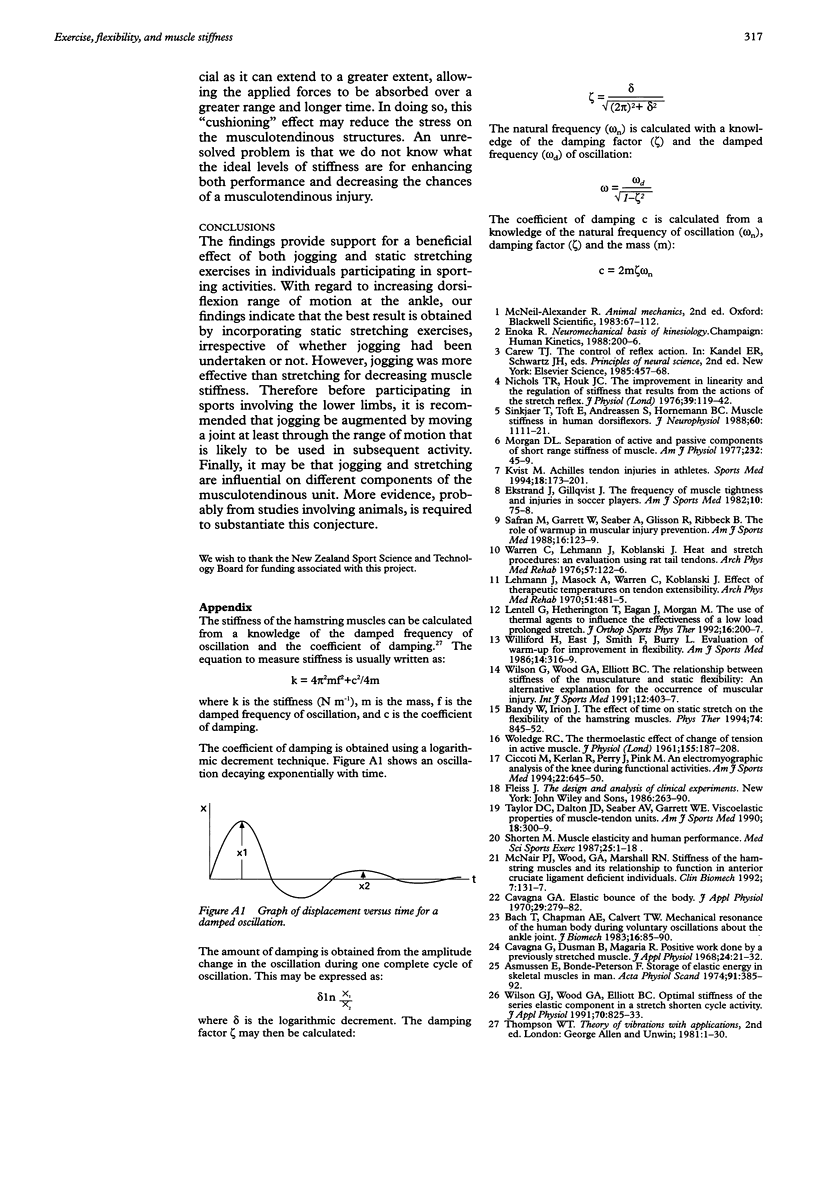
Images in this article
Selected References
These references are in PubMed. This may not be the complete list of references from this article.
- Asmussen E., Bonde-Petersen F. Storage of elastic energy in skeletal muscles in man. Acta Physiol Scand. 1974 Jul;91(3):385–392. doi: 10.1111/j.1748-1716.1974.tb05693.x. [DOI] [PubMed] [Google Scholar]
- Bach T. M., Chapman A. E., Calvert T. W. Mechanical resonance of the human body during voluntary oscillations about the ankle joint. J Biomech. 1983;16(1):85–90. doi: 10.1016/0021-9290(83)90049-0. [DOI] [PubMed] [Google Scholar]
- Bandy W. D., Irion J. M. The effect of time on static stretch on the flexibility of the hamstring muscles. Phys Ther. 1994 Sep;74(9):845–852. doi: 10.1093/ptj/74.9.845. [DOI] [PubMed] [Google Scholar]
- Cavagna G. A., Dusman B., Margaria R. Positive work done by a previously stretched muscle. J Appl Physiol. 1968 Jan;24(1):21–32. doi: 10.1152/jappl.1968.24.1.21. [DOI] [PubMed] [Google Scholar]
- Cavagna G. A. Elastic bounce of the body. J Appl Physiol. 1970 Sep;29(3):279–282. doi: 10.1152/jappl.1970.29.3.279. [DOI] [PubMed] [Google Scholar]
- Ciccotti M. G., Kerlan R. K., Perry J., Pink M. An electromyographic analysis of the knee during functional activities. I. The normal profile. Am J Sports Med. 1994 Sep-Oct;22(5):645–650. doi: 10.1177/036354659402200512. [DOI] [PubMed] [Google Scholar]
- Ekstrand J., Gillquist J. The frequency of muscle tightness and injuries in soccer players. Am J Sports Med. 1982 Mar-Apr;10(2):75–78. doi: 10.1177/036354658201000202. [DOI] [PubMed] [Google Scholar]
- Kvist M. Achilles tendon injuries in athletes. Sports Med. 1994 Sep;18(3):173–201. doi: 10.2165/00007256-199418030-00004. [DOI] [PubMed] [Google Scholar]
- Lehmann J. F., Masock A. J., Warren C. G., Koblanski J. N. Effect of therapeutic temperatures on tendon extensibility. Arch Phys Med Rehabil. 1970 Aug;51(8):481–487. [PubMed] [Google Scholar]
- Nichols T. R., Houk J. C. Improvement in linearity and regulation of stiffness that results from actions of stretch reflex. J Neurophysiol. 1976 Jan;39(1):119–142. doi: 10.1152/jn.1976.39.1.119. [DOI] [PubMed] [Google Scholar]
- Safran M. R., Garrett W. E., Jr, Seaber A. V., Glisson R. R., Ribbeck B. M. The role of warmup in muscular injury prevention. Am J Sports Med. 1988 Mar-Apr;16(2):123–129. doi: 10.1177/036354658801600206. [DOI] [PubMed] [Google Scholar]
- Taylor D. C., Dalton J. D., Jr, Seaber A. V., Garrett W. E., Jr Viscoelastic properties of muscle-tendon units. The biomechanical effects of stretching. Am J Sports Med. 1990 May-Jun;18(3):300–309. doi: 10.1177/036354659001800314. [DOI] [PubMed] [Google Scholar]
- WOLEDGE R. C. The thermoelastic effect of change of tension in active muscle. J Physiol. 1961 Jan;155:187–208. doi: 10.1113/jphysiol.1961.sp006622. [DOI] [PMC free article] [PubMed] [Google Scholar]
- Warren C. G., Lehmann J. F., Koblanski J. N. Heat and stretch procedures: an evaluation using rat tail tendon. Arch Phys Med Rehabil. 1976 Mar;57(3):122–126. [PubMed] [Google Scholar]
- Williford H. N., East J. B., Smith F. H., Burry L. A. Evaluation of warm-up for improvement in flexibility. Am J Sports Med. 1986 Jul-Aug;14(4):316–319. doi: 10.1177/036354658601400413. [DOI] [PubMed] [Google Scholar]
- Wilson G. J., Wood G. A., Elliott B. C. Optimal stiffness of series elastic component in a stretch-shorten cycle activity. J Appl Physiol (1985) 1991 Feb;70(2):825–833. doi: 10.1152/jappl.1991.70.2.825. [DOI] [PubMed] [Google Scholar]
- Wilson G. J., Wood G. A., Elliott B. C. The relationship between stiffness of the musculature and static flexibility: an alternative explanation for the occurrence of muscular injury. Int J Sports Med. 1991 Aug;12(4):403–407. doi: 10.1055/s-2007-1024702. [DOI] [PubMed] [Google Scholar]



